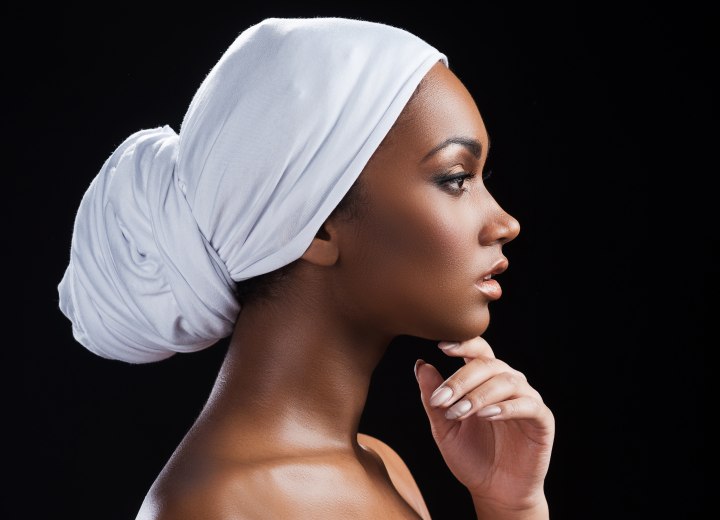Hair Wrapping

As well, what types of head scarves would be the least damaging to relaxed hair? Is a silk scarf better than cotton or polyester? Also, I heard that if you tie a scarf in the back of your head it tends to lead to more breaking in that area. Is this true? Any answers would be greatly appreciated.
A: Well, wrapping the hair is certainly one way to keep the hair under control while sleeping and to prevent cases of bed-head. However, I think the practice of wrapping the hair before bed at night was more a means to divide up the time needed to style the hair.
If you want to keep your hair free of breakage and frizz, you can certainly use the wrap method. Other options include using a silk or satin sleeping cap, or scarf, or a silk/satin pillowcase on your pillow. Silk and satin are gentler on the hair because the fibers are smoother. Other fabrics – like cotton, wool, etc. – are more likely to snag the hair fibers. Furthermore, the hair itself can get roughed up by rubbing against other hairs. The silk/satin fabrics allow the hairs to slide smoothly when you move in your sleep, reducing the amount of friction you experience.
Nightcaps and scarves are especially useful if you have curlier styles. These help to hold the curls while you sleep and prevent them from rubbing against one another and knotting up.
As for tying scarves, you want to make sure that you tie the scarf so that no hair is caught in the knotting. Many women find it simpler to wrap the scarf around the back of the head and tie it at the forehead where it is easier to avoid the hair when tying the scarf.
©Hairfinder.com
See also:
How to protect your hair when you go to bed
The difference between broken hairs and new growth
How to tell when hair is damaged
Causes and treatments for frizzy hair